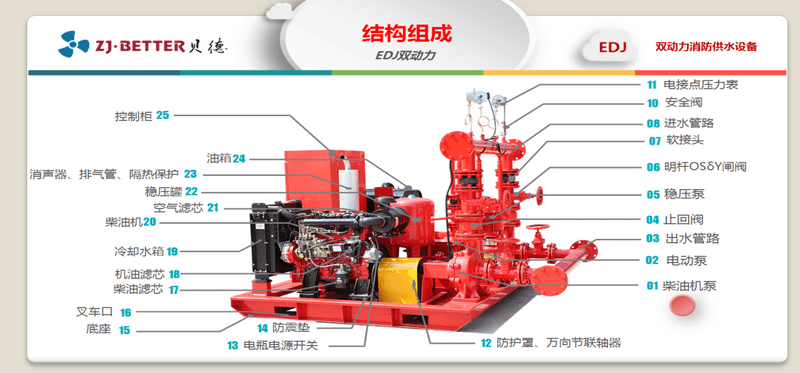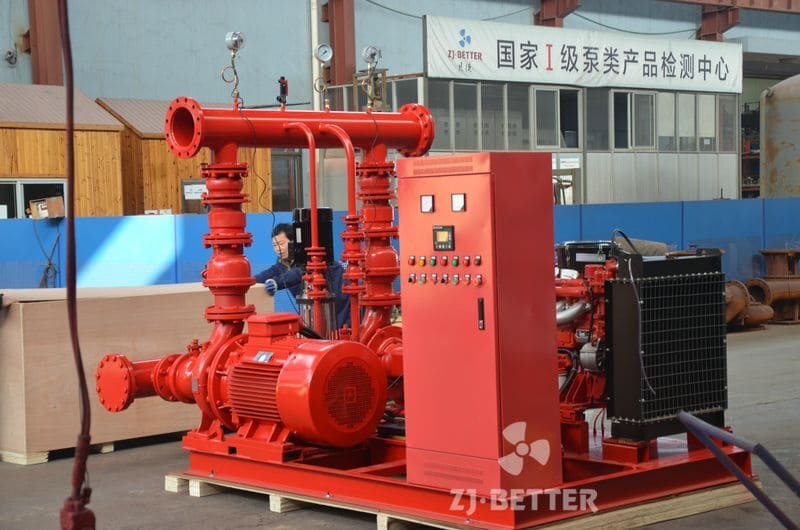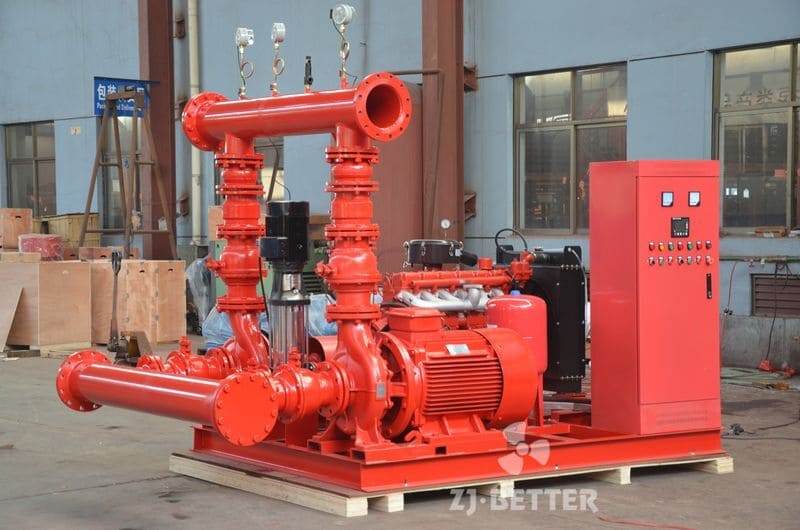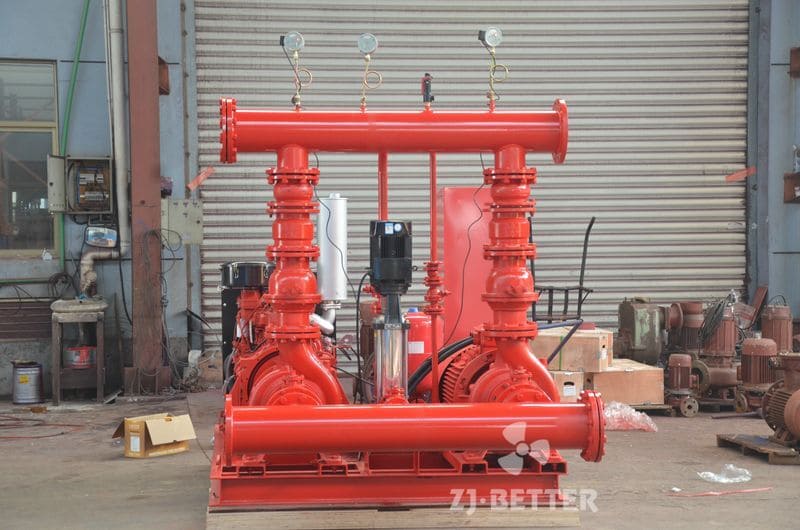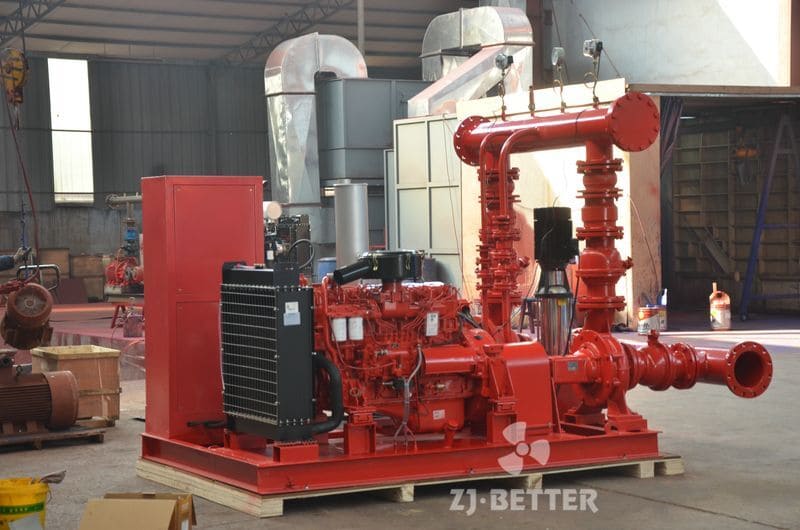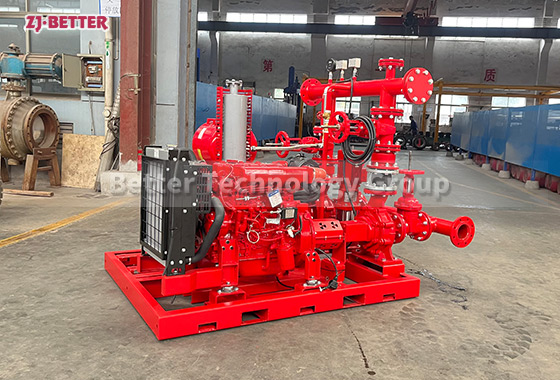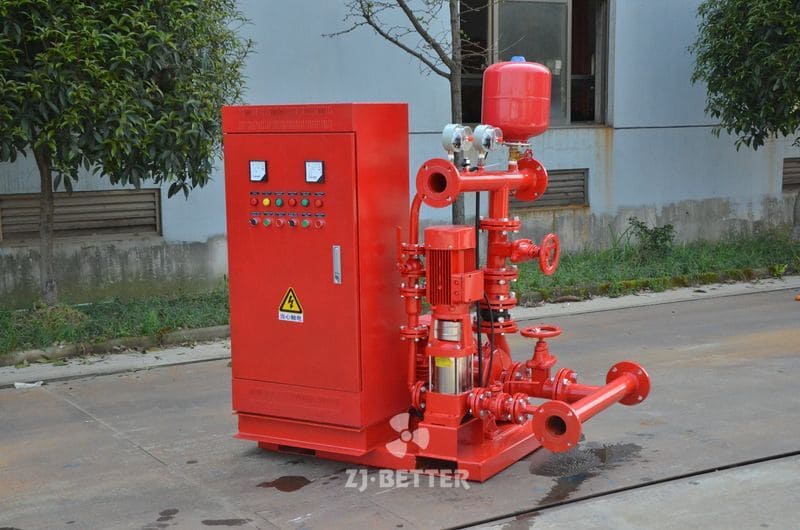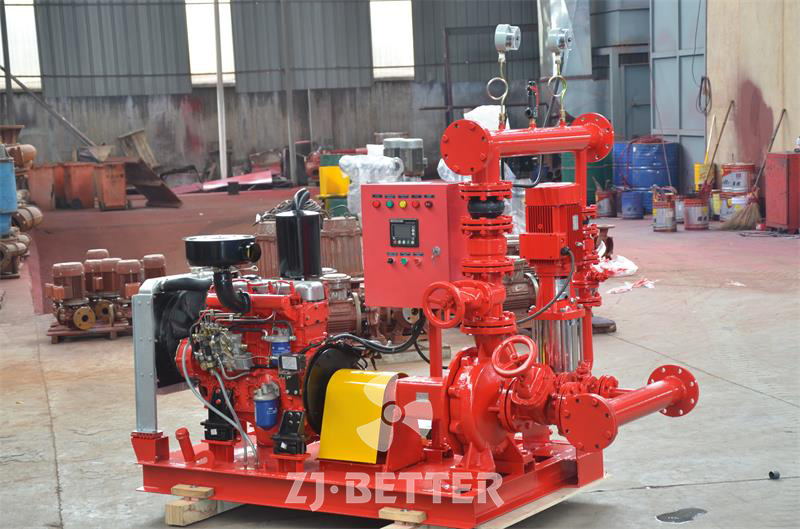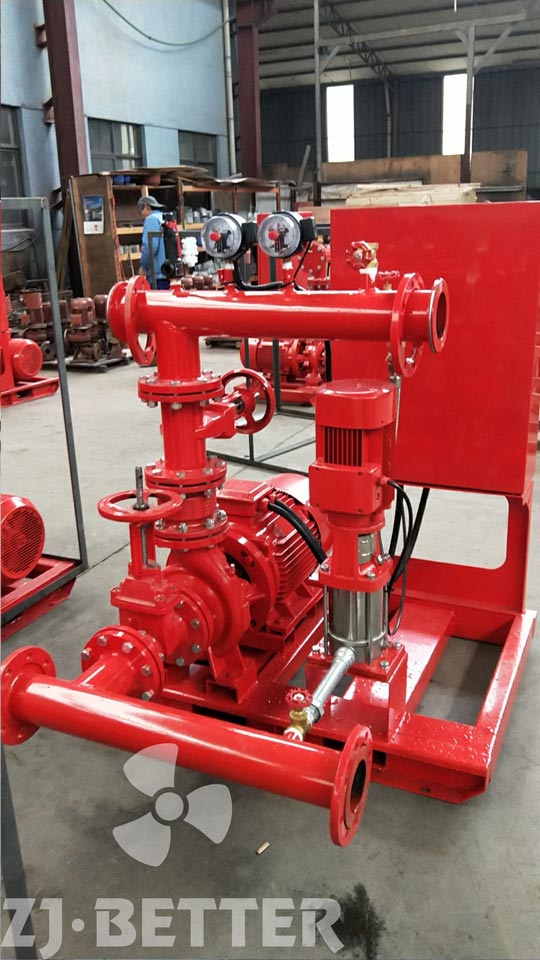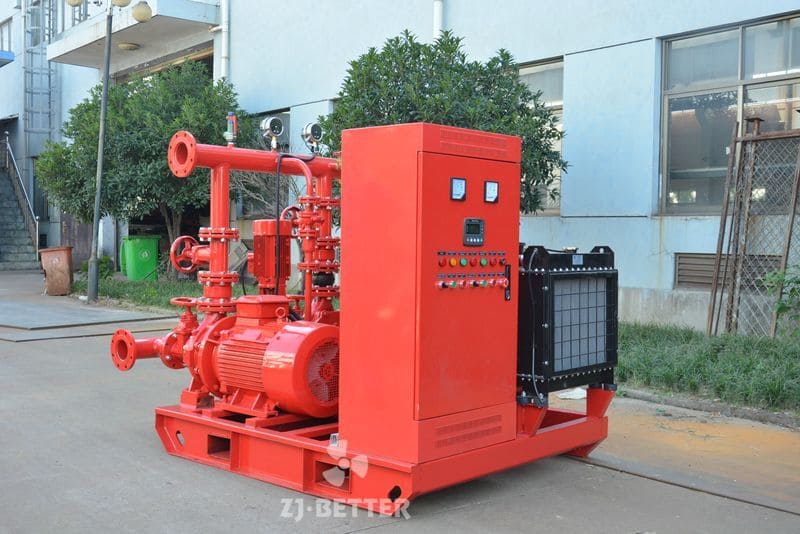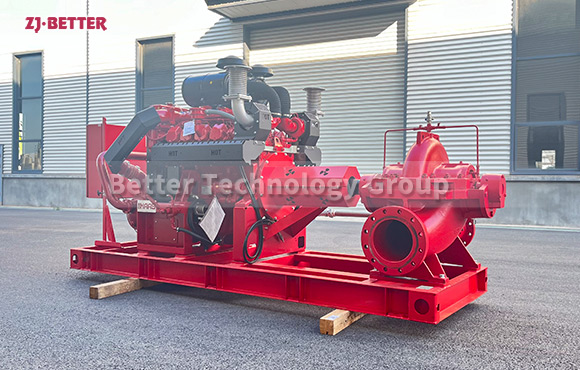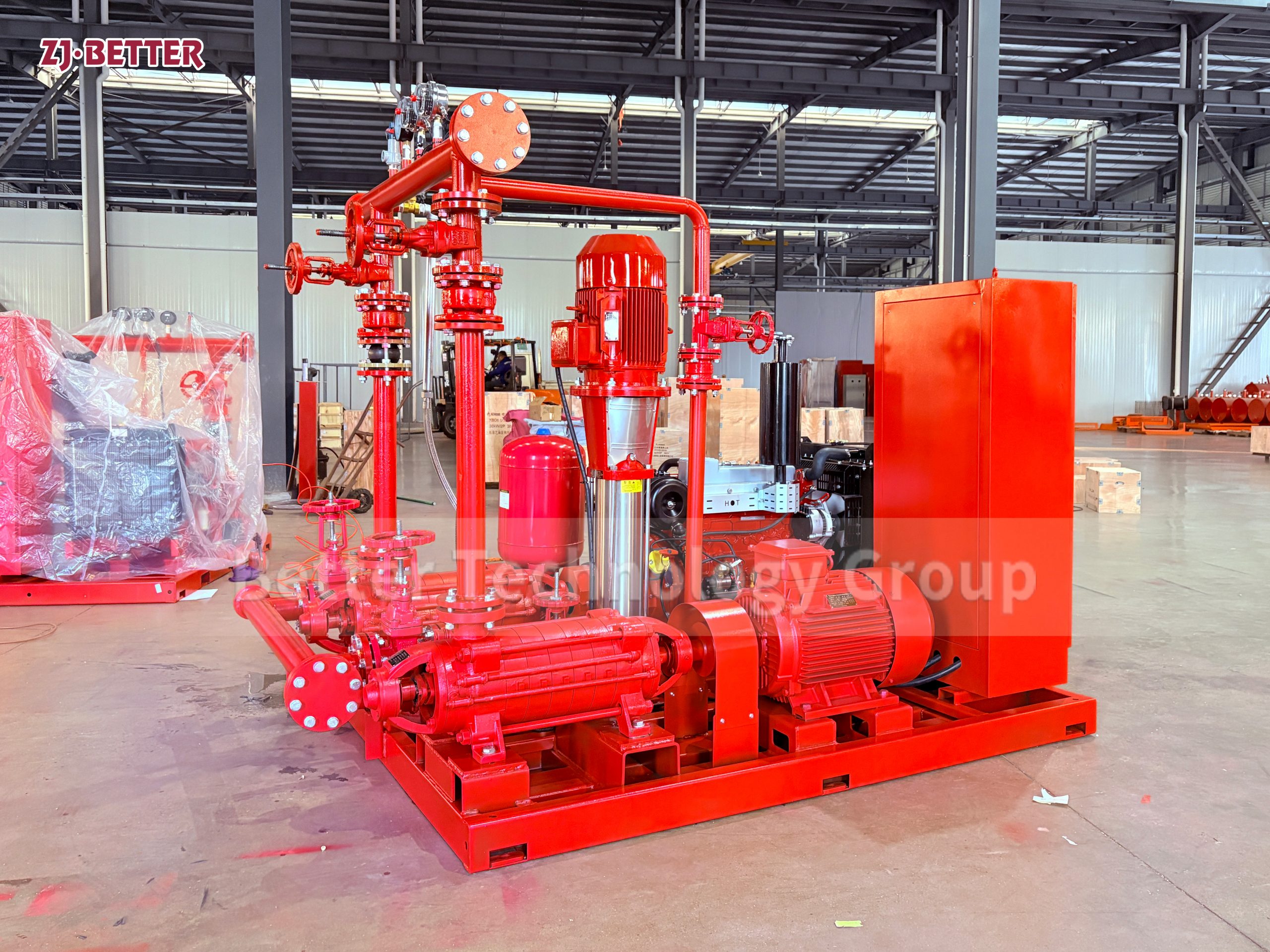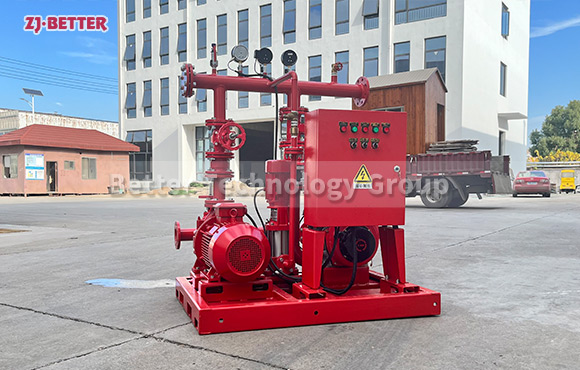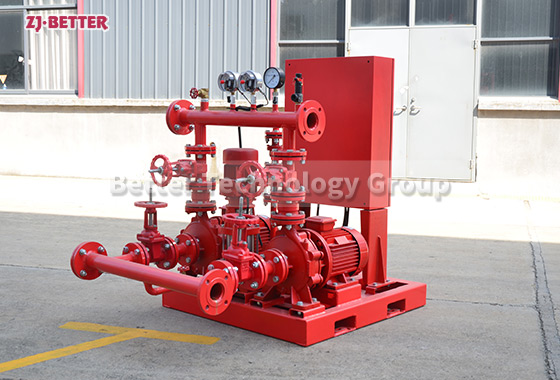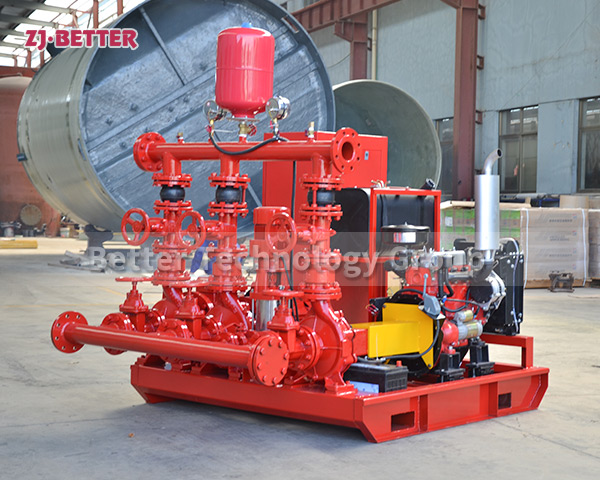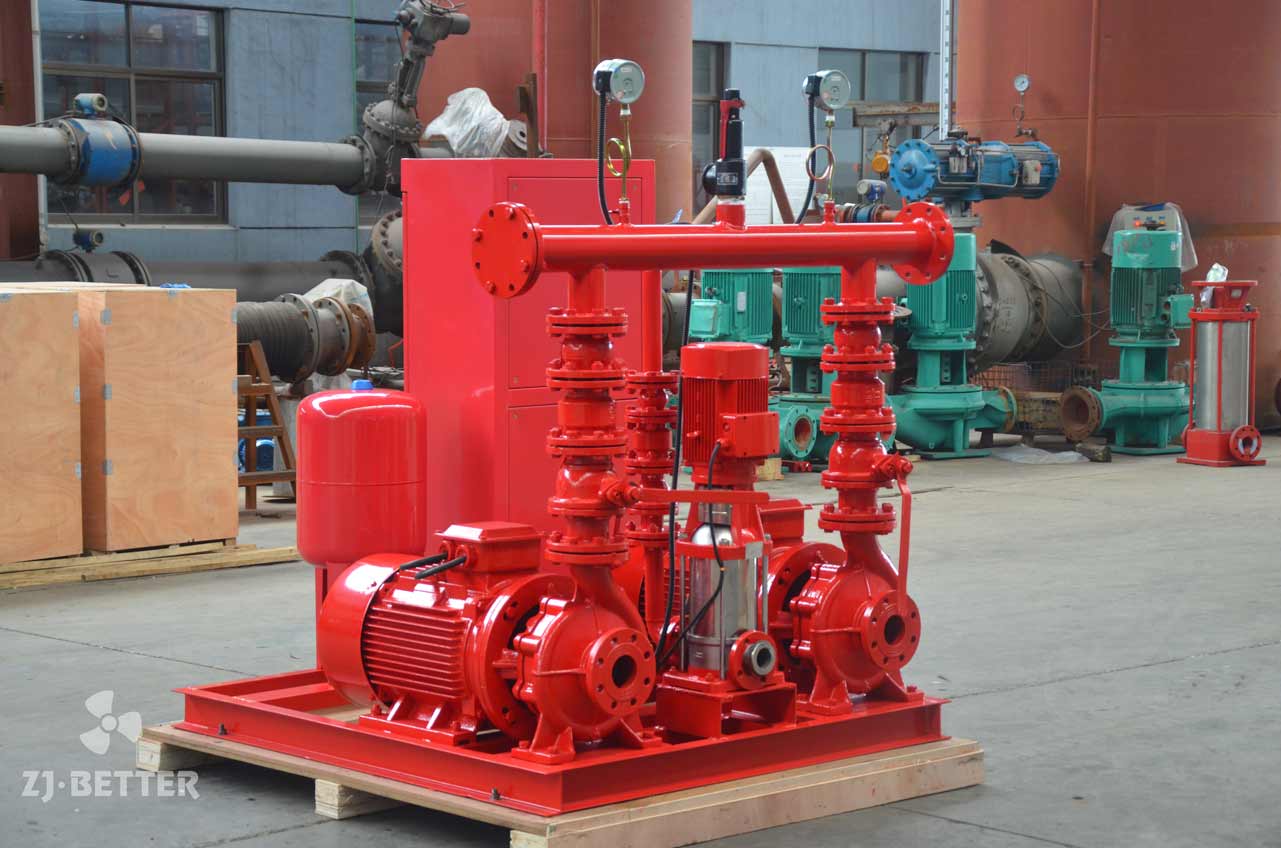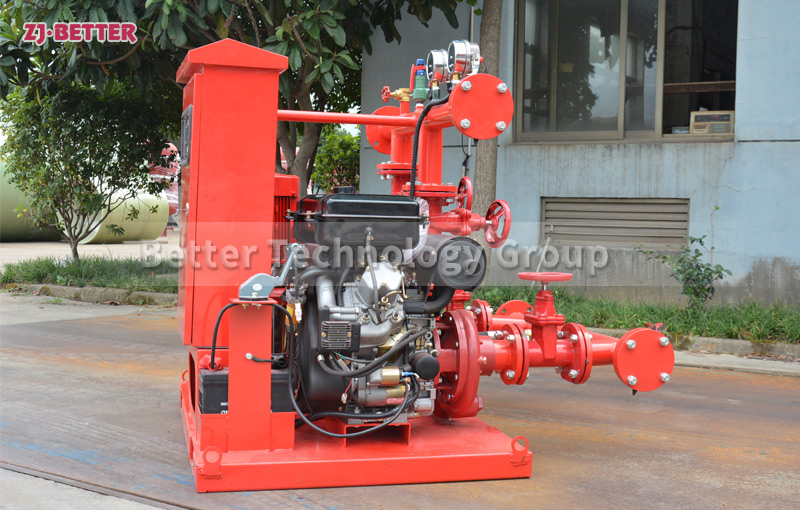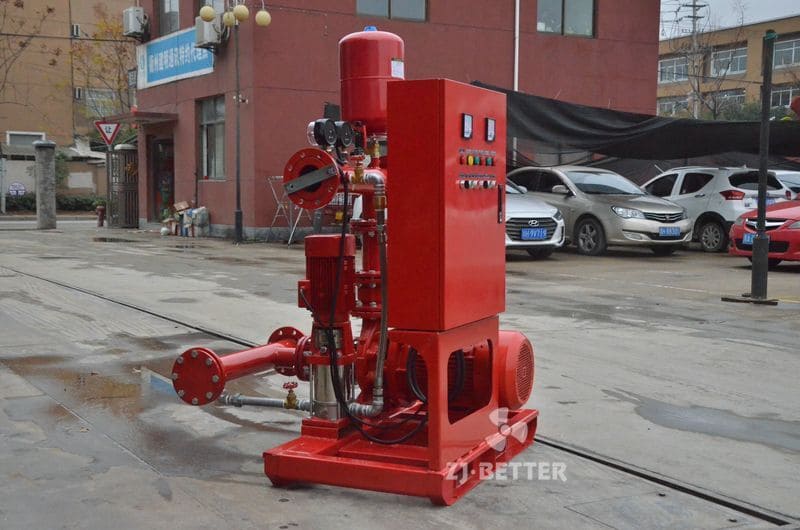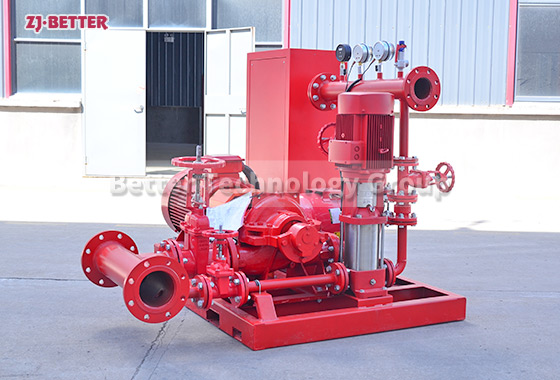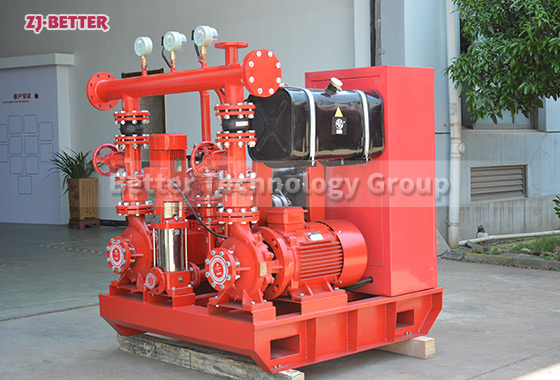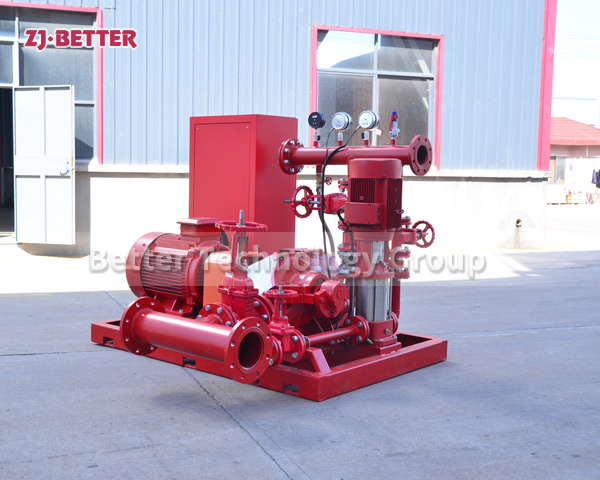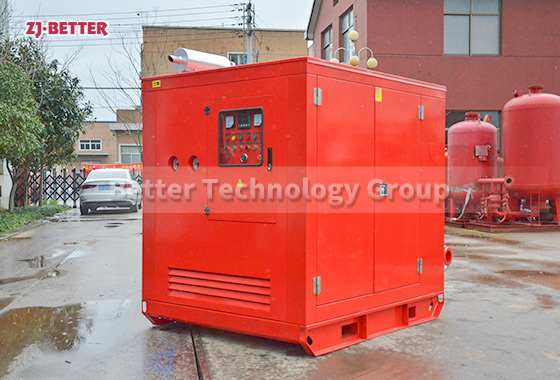Complete Set Of EDJ Fire Pump Set
EDJ fire pump set is composed of electric pump + diesel pump + jockey pump. This fire pump adopts ISW pump, which is easy to install. Our company has 20 years of industry experience and a professional sales team and R&D team.The control systems are produced by ourselves and the quality can be guaranteed as we have strong technical.The electric motors are also produced by ourselves, whether it is 50Hz or 60Hz.
EDJ fire fighting package set is composed of diesel fire pump, electric pump, jockey pump
Electric pump can choose single-stage pump, horizontal split case pump, end suction pump, multistage centrifugal pump, vertical turbine pump which are made of cast iron or stainless steel. Regarding to the impeller, we also could choose the bronze impeller.
Diesel fire pump, the flow is same as the electric pump. The diesel engine is combined by high elastic coupling or universal joint connection. The diesel fire set also includes fuel tank, water tank, fan, control panel and other components.
Jockey pump which is horizontal or vertical. Normally, it has the characteristics of small flow and higher head (more10-15m head than the electric pump and diesel pump)
Control panel. There are some advantages as below:Automatic control of electric pump, diesel pump and jockey pump, with overload, over-current protection
The accessories have check valve, gate valve, air pressure tank (0.6 mpa,1.0mpa,1.6mpa), pressure switch, pressure gauge, inlet and discharge pipe, soft joint, flange and common base.